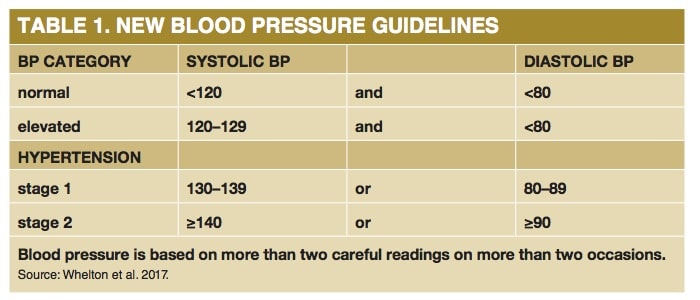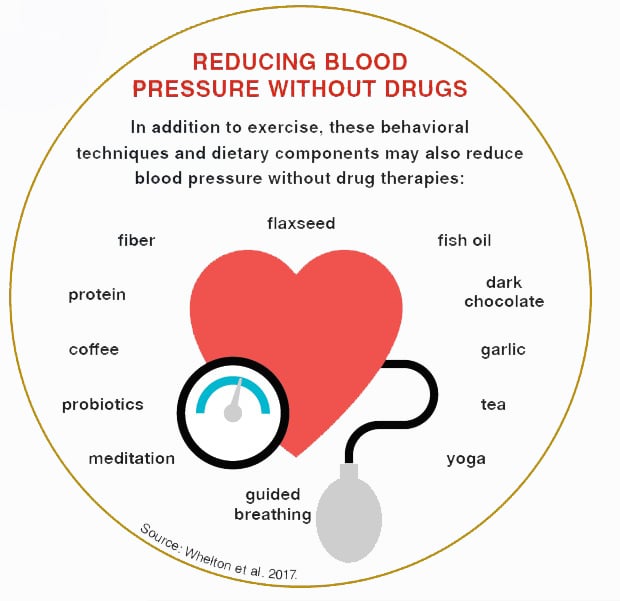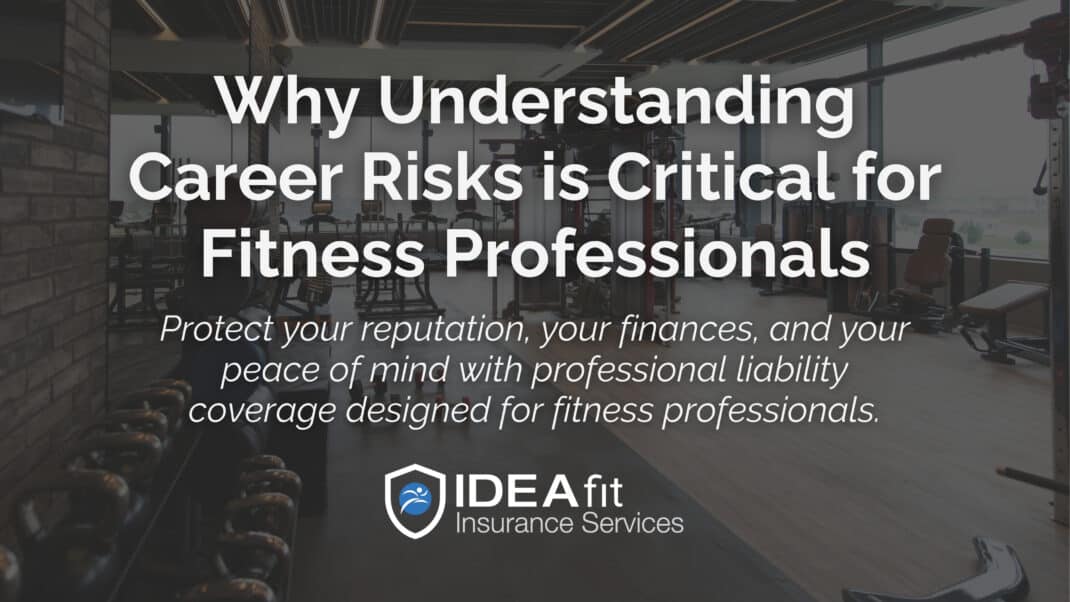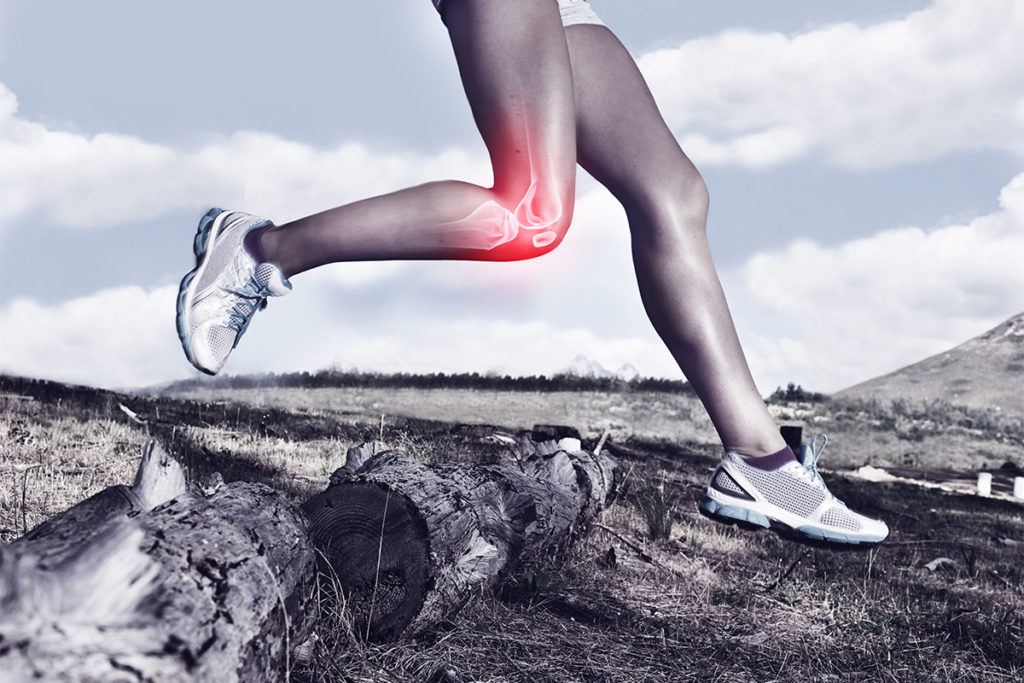What Fitness Pros Need to Know About New Blood Pressure Guidelines
Nearly half of U.S. adults have hypertension. The good news? Exercise can help!

New guidelines on high blood pressure made headlines late last year because they suggest that nearly half of all Americans have hypertension—up from about one-third under previous guidelines. This is big news for fitness professionals because regular exercise is an excellent tool for regulating blood pressure. In this issue, we’ll review what you need to know about the new blood pressure guidelines.
Background on the New Guidelines
The American College of Cardiology and the American Heart Association updated their blood pressure guidelines in November 2017 (see Table 1). Under the new classifications, a resting systolic blood pressure of 130–139 or a resting diastolic blood pressure of 80–89 indicates stage 1 hypertension. The new criteria define 46% of U.S. adults as hypertensive vs. 32% under the old guidelines (Whelton et al. 2017).
The guidelines were updated because so many authoritative studies show a strong association between high blood pressure and serious health risks, such as high cholesterol, kidney disease, stroke and heart disease. Indeed, more than half of deaths from coronary heart disease and stroke happen to people with hypertension (Whelton et al. 2017).
Next up, we’ll review current research on high blood pressure and highlight ways to manage it effectively with exercise and lifestyle.
Blood Pressure and Aging
It is particularly important for personal trainers to explain to clients that high blood pressure tends to worsen with age (Whelton et al. 2017). Aging populations are more prone to “isolated high systolic blood pressure” (Lelbach & Koller 2017), where systolic pressure is elevated but diastolic pressure is not. Among population groups, African Americans and Hispanics are more likely to develop hypertension than Asians and Caucasians (Whelton et al. 2017).
The gradual rise in blood pressure with age is primarily associated with arteriosclerosis, where large arteries lose elasticity, becoming stiffer and thicker, and with atherosclerosis, the gradual buildup of plaque in arteries. Aging also reduces the kidneys’ efficiency and ability to excrete salt, causing an unhealthy circulatory-system overload that affects systolic and diastolic pressures (Lelbach & Koller 2017).
Obesity and High Blood Pressure
Over the past 20 years, the risk of developing hypertension from obesity has been increasing at an alarming rate. The main problem is that obesity places a consistent strain on the heart’s cardiac output (heart rate × stroke volume). Other factors associated with hypertension and obesity include disturbances in the sympathetic nervous system (causing arteries to constrict); sodium retention; and metabolic abnormalities such as glucose intolerance, a precursor to prediabetes and type 2 diabetes (Lelbach & Koller 2017).
How Exercise Affects Blood Pressure
Epidemiological studies show that increasing physical activity and fitness—even by small amounts—reduces blood pressure and hypertension (Whelton et al. 2017). Personal trainers should inform clients that both cardiovascular exercise and resistance training can reduce blood pressure, though research suggests cardio is more effective. The report on the new blood pressure guidelines recommends cardio (90–150 minutes a week at 65%–75% of heart rate reserve) plus resistance training (90–150 minutes a week at 50%–80% of one-repetition maximum [multiset training with at least six total-body exercises, 10 repetitions per set]).
On average, aerobic exercise produces a 2- to 4-point decrease in blood pressure in adult patients with normal BP and a 5- to 8-point drop in adults with hypertension (Whelton et al. 2017). Note that decreases in blood pressure vary widely; these numbers represent averages from studies that include multiple populations and differing exercise protocols.
Cardiovascular exercise brings down blood pressure by reducing epinephrine and norepinephrine levels, which in turn decreases artery constriction. Cardio also enhances blood vessel function and generates structural adaptations in arteries (Lelback & Koller 2017). All of these changes improve blood circulation, potentially causing resting blood pressure to drop.
Diet and Hypertension
The new blood pressure guidelines note that the DASH diet (Dietary Approaches to Stop Hypertension) can help reduce blood pressure. DASH encourages people to consume less sodium, saturated fat, total fat and alcohol and eat more fruits, vegetables, whole grains and low-fat dairy products. It appears that low-carbohydrate and vegetarian diets can also help to reduce blood pressure (Whelton et al. 2017).
On sodium intake, the new guidelines suggest an optimal goal of less than 1,500 milligrams per day and call for a reduction of at least 1,000 mg per day for most adults. See “Reducing Blood Pressure Without Drugs” for other potential ways to reduce blood pressure.
Blood Pressure Really Matters
Fitness professionals need to help clients understand the dangers of high blood pressure—especially for people who are middle-aged or older (see Table 2). You can’t go wrong by helping clients develop comprehensive strategies to manage blood pressure. In the long run, their lives may depend upon it.
References
Lelbach, A., & Koller, A. 2017. Mechanisms underlying exercise-induced modulation of hypertension. Journal of Hypertension Research, 3 (2), 35–43.
Whelton, P.K., et al. 2017. ACC/AHA/AAPA/ABC/ACPM/AGS/APhA/ASH/ASPC/NMA/PCNA Guideline for the Prevention, Detection, Evaluation, and Management of High Blood Pressure in Adults. Hypertension. doi.org/10.1161/HYP.0000000000000065.
Len Kravitz, PhD
Len Kravitz, PhD is a professor and program coordinator of exercise science at the University of New Mexico where he recently received the Presidential Award of Distinction and the Outstanding Teacher of the Year award. In addition to being a 2016 inductee into the National Fitness Hall of Fame, Dr. Kravitz was awarded the Fitness Educator of the Year by the American Council on Exercise. Just recently, ACSM honored him with writing the 'Paper of the Year' for the ACSM Health and Fitness Journal.








